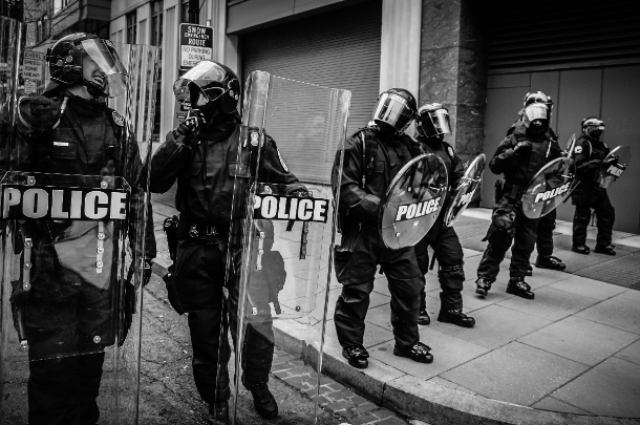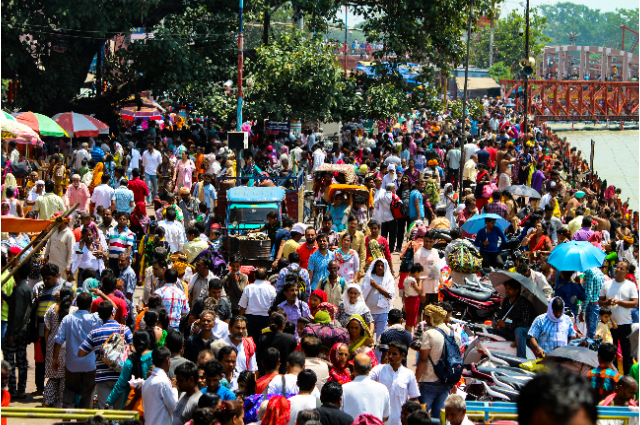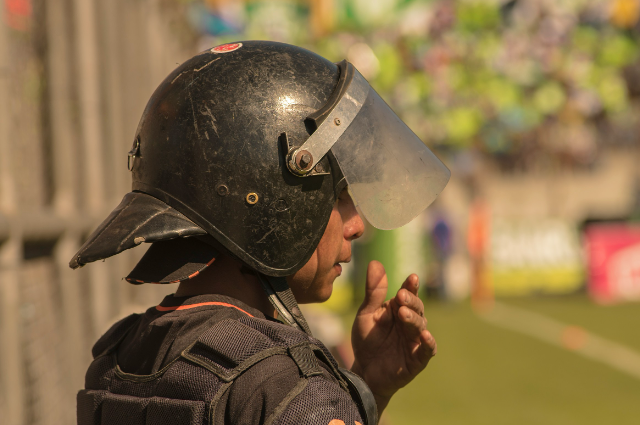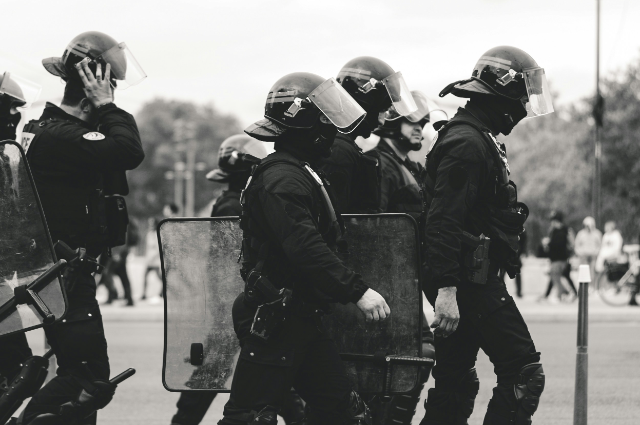
"Gangs thrive on power vacuums, lawlessness, and the failures of society to address its own issues." - Kiran Bedi
THE EVOLUTION OF ORGANIZED CRIME
Baba Siddique, a prominent political figure with deep connections in various spheres of influence, played a vital role in maintaining equilibrium among different factions. His death has caused a shift in this delicate balance, sparking instability.
His influence stretched beyond politics into the realm of local power brokers and organized groups. With his passing, a power vacuum emerged, allowing various gangs and criminal organizations to expand their operations.
The Rise of Organized Crime in India:
- India has witnessed a significant evolution in organized crime over the past few decades, with gangs diversifying their operations from traditional extortion and smuggling to more sophisticated crimes such as drug trafficking, money laundering, and cybercrime.
- Increasing urbanization, economic disparity, and political corruption have created a conducive environment for the growth of gang networks, often intertwining with terrorism and international criminal syndicates.
Impact of Siddique's Death on Gang Activity:
- The death of a figure like Siddique creates an opening for competing factions to seize control over territories and illicit operations. Rival gangs have been quick to exploit this vacuum, intensifying territorial disputes and criminal activities.
- This power struggle is expected to escalate violent confrontations, leading to further instability in regions already vulnerable to organized crime.
Organized Crime in Modern India:
- Over time, organized crime in India has evolved from small-scale street gangs to highly organized and transnational operations. These gangs often collaborate with international drug cartels, terrorist organizations, and money-laundering networks.
- The modern era of crime is marked by its complexity, with criminals leveraging technology and expanding their reach beyond traditional boundaries.
The Nexus Between Gangs and Terrorism:
- There is increasing evidence of the nexus between gangs and terrorist organizations, where criminal networks are used to facilitate terror activities such as arms smuggling, drug trafficking, and recruitment of foot soldiers.
- The merging of these two spheres presents a major threat to India's national security.
As organized crime continues to evolve and intertwine with terrorism in India, are the current measures enough to combat this growing threat, or do we need a more integrated, innovative approach to ensure the safety and stability of modern India?
RISE OF THE GANGS: SUFFERING OF THE DEMOCRACY

1. Power Vacuum After Siddique’s Death:
- Leadership Collapse: Baba Siddique's influence, particularly in mediating between rival factions, created a stable balance of power. His death led to a power vacuum, leaving an open field for various criminal elements to compete for dominance.
- Territorial Disputes: Without a central figure like Siddique, gangs scrambled to control territories previously under his influence, leading to an increase in violent clashes and turf wars.
- Fragmentation and Rivalry: The lack of a unifying authority led to fragmentation within established gangs, spawning new factions vying for control, further intensifying gang-related violence.
2. Geographical Areas Affected:
- Urban Centers: Cities like Mumbai, Delhi, and Pune witnessed a spike in gang-related activities post-Siddique, especially in areas historically prone to organized crime. These regions serve as hubs for drug trafficking, extortion, and illegal trade, making them ripe for power struggles.
- Semi-Urban and Peripheral Areas: Gangs began expanding operations to semi-urban areas and the peripheries of metropolitan cities where law enforcement is often weaker. This spread allowed smaller gangs to rise unchecked, contributing to localized violence and criminal activities.
- State-Level Nexus: Certain regions, particularly in Maharashtra and Uttar Pradesh, saw a resurgence of politically backed gangs leveraging the power vacuum to secure local influence and economic control.
3. Socio-Economic and Political Factors:
- Unemployment and Poverty: High unemployment rates and economic disparity in urban and rural regions created a breeding ground for young recruits drawn into gang activities. The lack of opportunities fosters a climate where crime becomes an alternative livelihood.
- Political Corruption: Weak governance, coupled with political corruption, allows gangs to infiltrate systems of power. Politicians often rely on gang networks to secure votes or suppress opposition, creating an environment where gangs thrive with political backing.
- Weak Law Enforcement: Insufficient resources, outdated methods, and corruption within law enforcement agencies have limited their ability to effectively counter the rise of gang activities. This inefficiency leaves many regions vulnerable to organized crime.
- Social Instability: Rising inequality, combined with social unrest, contributes to an environment where marginalized communities are susceptible to gang recruitment. Gangs often provide a sense of identity and belonging to disenfranchised groups, fueling their growth.
A Question for the Reader:
As gangs expand their reach and influence, especially in the wake of major power shifts like Siddique’s death, can India strengthen its socio-political structures and law enforcement to prevent these criminal networks from becoming deeply embedded in society?
CONNECTION BETWEEN GANGS AND TERRORISM

1. Organized Crime and Terrorism: A Symbiotic Relationship
Gangs and terrorist groups, though differing in objectives, often find common ground in their operations. Gangs typically pursue financial gain through illegal activities, while terrorist organizations seek political or ideological outcomes. Despite these differences, they sometimes collaborate for mutual benefit. Gangs provide operational infrastructure, such as access to black markets, smuggling routes, and local networks, while terrorists offer gangs financial incentives or protection.
2. Logistical Support Through Gang Networks
Gang networks play a crucial role in facilitating terrorist operations. From smuggling weapons and contraband to offering safe houses and local intelligence, gangs often act as the logistical backbone for terror outfits. In exchange, terrorist groups provide gangs with funds or arms, creating a mutually beneficial exchange. This intersection can be particularly dangerous when gangs operate in regions with limited state control, allowing terrorists to infiltrate communities under the guise of organized crime.
3. Case Study 1: D-Company and Lashkar-e-Taiba (LeT)
One of the most notorious examples of this connection is the collaboration between Dawood Ibrahim’s D-Company and the Pakistan-based terror group, Lashkar-e-Taiba (LeT). D-Company, an Indian criminal syndicate, has long been involved in drug trafficking, extortion, and other organized crimes. However, it has also been linked to facilitating terrorist attacks, such as the 1993 Mumbai bombings. Ibrahim’s vast criminal network provided logistical support, including financial backing and smuggling routes, to LeT in exchange for protection and influence in Pakistan.
4. Case Study 2: Indian Mujahideen and Local Gangs
Another example is the Indian Mujahideen (IM), a homegrown terror group that has utilized local gang networks to fund and organize their attacks. By engaging in activities such as extortion, illegal arms trading, and counterfeit currency circulation, IM has maintained its operations with the help of organized crime networks. Gangs operating in urban centers, especially in Mumbai and Delhi, have facilitated these illegal transactions, allowing terror networks to flourish under the radar.
5. Blurred Lines Between Crime and Terrorism
The convergence of gangs and terrorism blurs the lines between criminal activity and insurgency. In certain cases, gangs evolve into terror groups, while terrorists adopt the tactics of organized crime. This dynamic creates a complex security challenge for law enforcement, which must navigate the dual threats of criminal enterprises and terrorism, often with overlapping participants and interests.
6. The Role of State Weakness and Corruption
State corruption and weak law enforcement also play a significant role in enabling the nexus between gangs and terrorism. When local authorities are compromised or ineffective, it provides a fertile ground for these collaborations to thrive. Gangs exploit loopholes in law enforcement, while terrorists manipulate the vulnerabilities of these systems to advance their agendas.
Question for the Reader:
As gangs and terrorist networks continue to overlap and evolve in India, how can law enforcement and society distinguish between criminal and terrorist activities, and what strategies can effectively combat this dual threat?
TERRORISM'S IMPACT ON INDIA'S MODERN SECURITY LANDSCAPE

1. Urban and Rural Vulnerability:
- Urban Areas: Major metropolitan cities in India, such as Delhi, Mumbai, and Bangalore, have seen heightened threats of terrorism due to dense populations, economic significance, and the presence of critical infrastructure. Terrorist groups often target these urban hubs to create maximum disruption, media attention, and psychological impact.
- Rural Areas: Rural regions, particularly those near conflict zones like Kashmir, Northeastern India, and parts of Central India, face insurgency and terror threats. These areas are vulnerable due to limited law enforcement presence, difficult terrain, and socio-political grievances that are exploited by terrorist factions.
2. Shifting Tactics and Technologies:
- Terrorist groups in India are increasingly adopting advanced technologies, including cyberterrorism, drones, and social media for recruitment, funding, and coordination. This shift in tactics has complicated the ability of Indian law enforcement agencies to anticipate and respond to attacks.
- The rise of home-grown terror cells, radicalization through digital platforms, and cross-border terrorism pose significant challenges for India's internal security.
3. Public Safety and National Fear:
- The psychological impact of terrorism is profound, particularly in urban areas where public fear of attacks on transportation networks, marketplaces, and iconic landmarks remains high. Terrorism not only endangers physical safety but also creates a pervasive atmosphere of insecurity, affecting daily life and routine activities.
- In rural areas, constant fear of insurgent attacks disrupts social order, education, healthcare, and community cohesion, further alienating populations from the state.
4. Economic Disruption:
- Terrorism leads to significant economic losses through destruction of property, interruption of business activities, and loss of investor confidence. Urban terrorism, particularly in financial hubs like Mumbai, has the potential to destabilize markets, deter foreign investments, and disrupt industries, including tourism, retail, and banking.
- In rural areas, terrorism often impedes agricultural productivity and resource extraction, leading to economic stagnation and displacement of communities. Long-term instability in conflict zones causes developmental delays and weakens local economies.
5. Political Stability and Governance:
- Terrorism often exploits political weaknesses and exacerbates social divisions in India. Cross-border terrorism, particularly from Pakistan, has fueled tensions in sensitive regions, including Jammu and Kashmir, straining the diplomatic relationship between the two nations and influencing national security policies.
- The government’s counterterrorism measures, such as military operations, stricter surveillance, and anti-terror laws, are often met with political debates concerning civil liberties, human rights, and federalism. Striking the right balance between national security and democratic values remains a major challenge for policymakers.
6. Long-term National Security Outlook:
- India’s security apparatus faces increasing demands to deal with multifaceted terrorism threats—ranging from religious extremism to separatist movements. As terrorism becomes more decentralized and technologically sophisticated, security measures will need to be more dynamic and adaptive.
- India must also address root causes such as socio-economic disparity, political alienation, and religious radicalization, which are often exploited by terror groups for recruitment and propaganda.
7. Global Influence and Counterterrorism Collaboration:
As India’s global stature grows, the nation is becoming a key player in international counterterrorism efforts. Collaborations with foreign intelligence agencies and international organizations have improved India’s capacity to thwart terror plots. However, regional conflicts, particularly in South Asia, continue to present significant barriers to establishing long-term peace and stability.
Question for the Reader:
In a country as diverse and complex as India, how can we strike a balance between ensuring national security and preserving democratic freedoms while countering terrorism's growing threat?
GOVERNMENT AND LAW ENFORCEMENT RESPONSE

1. Strengthening Anti-Gang Laws:
- The Indian government has introduced stringent laws to curb organized crime, such as the Maharashtra Control of Organised Crime Act (MCOCA) and the Unlawful Activities (Prevention) Act (UAPA).
- These laws provide authorities with more power to investigate, prosecute, and detain gang leaders and their affiliates.
- However, the application of these laws has been criticized for overreach and misuse, sometimes leading to wrongful detention and suppression of dissent.
2. Specialized Task Forces:
- Several states have formed specialized task forces to deal with gang violence and organized crime.
- These units often focus on high-profile criminals and inter-state operations, coordinating efforts to dismantle gang networks.
- However, these task forces are often hampered by limited resources, jurisdictional challenges, and the sheer scale of organized crime across state lines.
3. Modernization of Law Enforcement:
- The Indian government has been investing in the modernization of its police force through better technology, surveillance systems, and intelligence-sharing platforms.
- Digital tools such as facial recognition, AI-driven analytics, and database tracking of criminal activities are increasingly being employed to anticipate and counteract gang-related crimes.
- Despite these advancements, the implementation is often inconsistent across regions, with rural and semi-urban areas lacking access to such technologies, limiting their effectiveness.
4. Intelligence Gathering and Counterterrorism Measures:
- Intelligence agencies, such as the Intelligence Bureau (IB) and National Investigation Agency (NIA), are collaborating with state police to track terrorist activities that may overlap with organized crime.
- There is an increased focus on breaking the nexus between gangs and terror outfits by disrupting funding channels and targeting high-level operatives.
- However, intelligence agencies often face challenges with inter-agency coordination, bureaucratic delays, and gaps in real-time information sharing, which weakens the overall counterterrorism framework.
5. Community Policing Initiatives:
- To prevent gang recruitment and build trust within communities, some regions have adopted community policing initiatives aimed at engaging local populations in crime prevention.
- These programs focus on youth rehabilitation, vocational training, and public awareness campaigns to reduce the lure of gang involvement.
- Yet, the scale and reach of these initiatives are limited, and without sustained investment, the long-term impact remains uncertain.
6. Judicial Bottlenecks and Legal Challenges:
- India's legal system often faces bottlenecks, with cases of organized crime and terrorism languishing in courts for years.
- The slow pace of trials and the overwhelming backlog of cases undermine the deterrent effect of punitive measures.
- Moreover, high-profile criminals sometimes exploit legal loopholes or influence judicial processes, weakening the state’s ability to effectively prosecute them.
7. Corruption and Local Political Nexus:
- One of the most significant barriers to countering gang-related crime is corruption within law enforcement and the political nexus between local gangs and influential figures.
- Gangs often operate with impunity due to political protection, making it difficult for police forces to take strict action.
- While anti-corruption measures have been introduced, breaking these entrenched alliances remains a major challenge.
Effectiveness and Limitations:
Effectiveness:
- The government’s focus on intelligence-based operations and legal reforms has led to several high-profile arrests and the dismantling of notorious gangs.
- The modernization of police forces, particularly in urban centers, has increased the ability to respond to organized crime swiftly.
Limitations:
- Despite some success, the spread of gang-related crime in rural and less-developed areas remains a pressing issue.
- The effectiveness of the government’s response is often hindered by inadequate funding, bureaucratic delays, and gaps in coordination between state and central agencies.
- Corruption and political influence over law enforcement continue to undermine efforts to combat both gang violence and terrorism.
Question for the Reader:
Given the entrenched challenges within law enforcement and the political landscape, can India’s current strategies effectively curb the rising threat of gang violence and terrorism, or do we need a fundamental overhaul of the system to address these deeply-rooted issues?
CONSEQUENCES & FUTURE OUTLOOKS
Public Fear and Social Consequences
- Increased Anxiety and Insecurity: The rise in gang violence and terrorism creates a pervasive sense of fear among the public. Citizens become wary of their surroundings, particularly in regions where criminal activities are rampant. This leads to heightened anxiety and feelings of insecurity in daily life, affecting mental well-being and limiting social interactions.
- Impact on Economic and Social Mobility: Areas affected by gang violence often experience economic stagnation, as businesses are reluctant to invest in high-risk zones. Residents may also face difficulties in finding employment, leading to a cycle of poverty and crime. Social mobility is constrained as families seek to avoid gang-dominated areas, reducing opportunities for education and upward movement.
- Erosion of Trust in Law Enforcement: As gang violence and terrorism continue to rise, public confidence in the effectiveness of law enforcement agencies dwindles. Citizens may feel that the police are either unable or unwilling to protect them, fostering an environment where vigilante justice or reliance on gangs for protection becomes normalized.
- Disruption of Social Cohesion: Terrorism and organized crime create deep societal fractures, often based on religious, ethnic, or political lines. Communities may become divided as mistrust grows, and local residents feel compelled to align themselves with particular groups for safety. This erodes the social fabric, weakening community resilience and cooperation.
- Media Amplification of Fear: The role of the media in reporting gang violence and terrorism can either inform or inflame public sentiment. Sensationalist reporting tends to emphasize violent incidents, often exaggerating their frequency and impact, leading to increased public paranoia. While media serves as a vital source of information, it can also manipulate narratives, intensifying fear and creating divisions within society.
Question for the Reader: As public fear grows in response to rising crime and terrorism, how can society balance the need for security with the preservation of individual freedoms and community trust?
Future Outlook
- Unchecked Growth of Crime Networks: If gang violence and terrorism continue to rise without effective intervention, India may face an era where criminal networks wield significant power, undermining the rule of law. This could lead to the formation of parallel economies controlled by gangs, making it even harder for the government to reassert control in affected regions.
- Escalation of Terrorist Activities: Without curbing the rise of terrorism, there is a high risk of increased attacks in urban centers and critical infrastructure, destabilizing not only India's security but also its economy. Terrorist organizations may exploit the expanding networks of organized crime to fund their activities, posing a greater threat to national security.
- Widespread Distrust in Governance: A continuous rise in crime will further alienate the public from the government. Citizens may begin to lose faith in democratic institutions, questioning the state’s ability to protect them. This could fuel unrest, create breeding grounds for extremist ideologies, and even encourage some to turn to criminal organizations for protection or livelihood.
- Potential for Civil Unrest: As gang violence and terrorism spiral, the country may witness an increase in civil unrest, with more frequent protests and localized revolts against the perceived failure of governance. Social tensions could lead to clashes between different communities, further destabilizing the nation's internal peace.
Proposed Strategies to Mitigate These Threats
- Law Enforcement Reform: To tackle gang violence and terrorism effectively, law enforcement agencies need to undergo structural reforms. This includes better training, increased accountability, and the modernization of investigative tools. Corruption within law enforcement must be addressed, as it often enables organized crime to thrive.
- Community Policing Initiatives: Strengthening ties between law enforcement and local communities is essential. Community policing initiatives can help restore trust, encourage cooperation in reporting crime, and reduce the influence of gangs. Engaging local leaders, civil organizations, and youth in crime prevention can create a sense of shared responsibility.
- Addressing Root Causes: Long-term solutions must focus on addressing the socio-economic issues that drive individuals into organized crime. Improving access to education, employment, and social services in gang-dominated regions can help weaken criminal networks by reducing their recruitment base.
- Counter-Terrorism Intelligence Networks: Building stronger intelligence-sharing networks, both domestically and internationally, will be crucial in preventing terrorist organizations from exploiting gang networks. Enhanced surveillance and the use of advanced technology in tracking terrorist funding and recruitment are also key components of this strategy.
- Public Awareness Campaigns: Launching awareness campaigns to educate the public about the dangers of gang involvement and radicalization can reduce recruitment. Programs targeting vulnerable groups, especially young people, can help them resist the lure of organized crime or extremist ideologies.
- Economic Investment in Affected Areas: Economic revitalization of areas suffering from high levels of gang violence can have a profound impact. Encouraging investment, providing small business grants, and creating job opportunities can help displace criminal economies with legitimate industries.
The future of India’s internal security depends on the concerted efforts of law enforcement, policymakers, and communities. Will the country rise to the challenge, or will it continue to struggle against the tide of rising crime and terror?
END NOTE:
- The rise of gangs in India has created a complex landscape where organized crime increasingly intertwines with terrorist activities. This relationship poses significant challenges to national security and public safety.
- The death of influential figures like Baba Siddique can lead to a power vacuum, which gangs are quick to exploit. This has resulted in an escalation of violence and territorial disputes, further destabilizing communities.
- The effectiveness of law enforcement in tackling gang-related crimes and preventing terrorism is under scrutiny. There is an urgent need for a comprehensive strategy that includes better training, community engagement, and intelligence sharing.
- A well-informed public can serve as the first line of defense against organized crime and terrorism. Community awareness programs are essential for fostering vigilance and cooperation with law enforcement.
- Without immediate and concerted action, the relationship between gangs and terrorism could deepen, leading to increased violence and instability in India. Policymakers must prioritize measures that address the complexities of crime and its socio-economic underpinnings.

Question for the Reader:
What proactive steps do you believe can be taken by individuals and communities to combat the rise of organized crime and terrorism in modern India?
